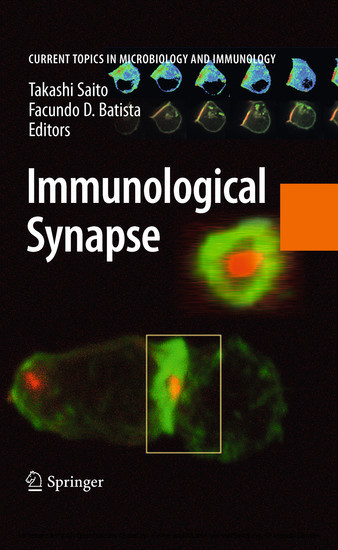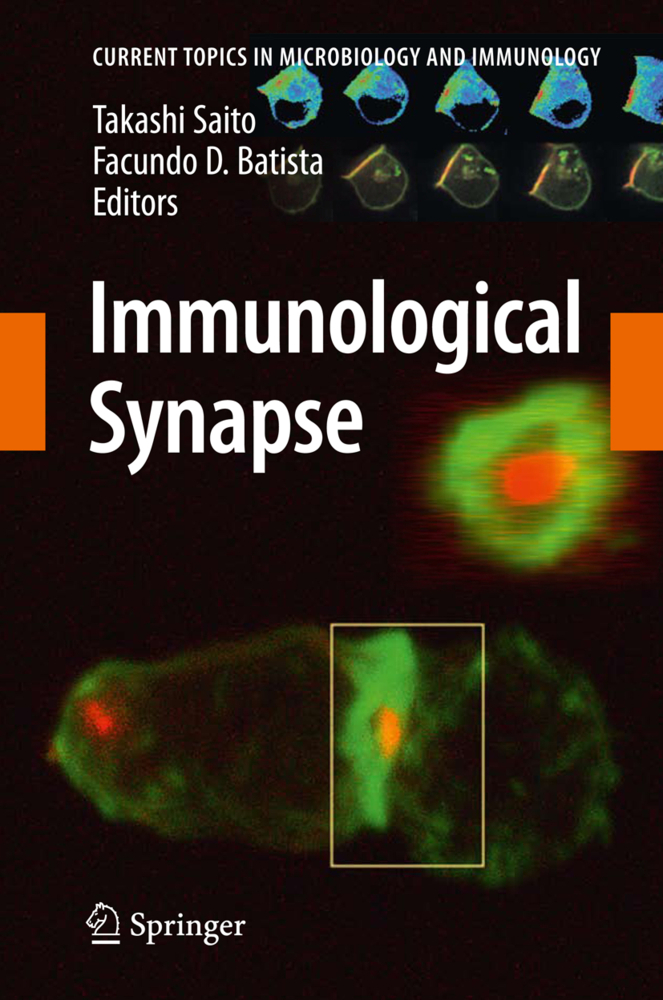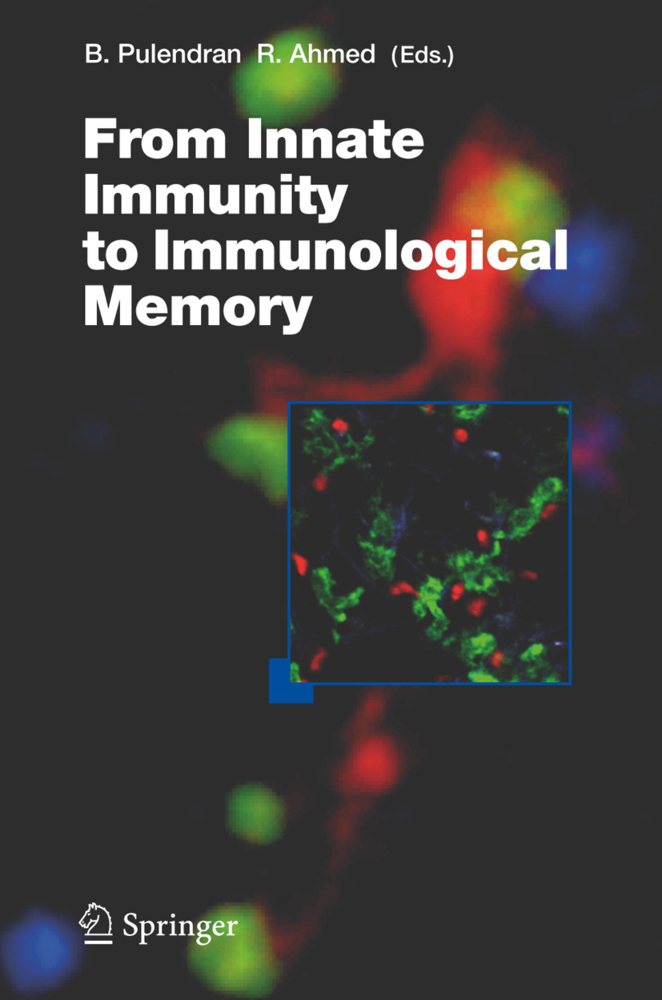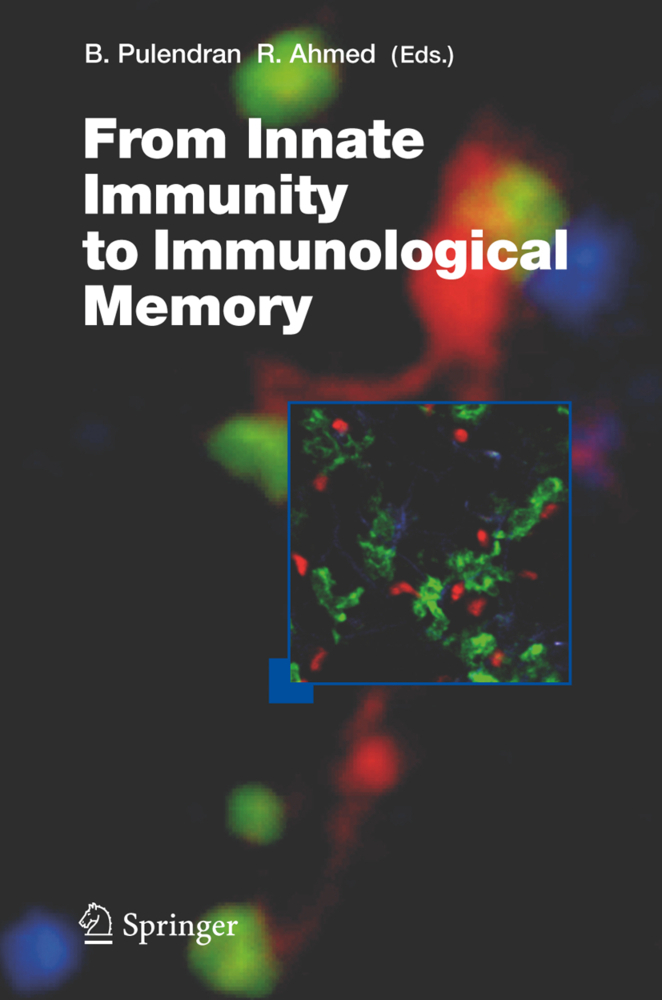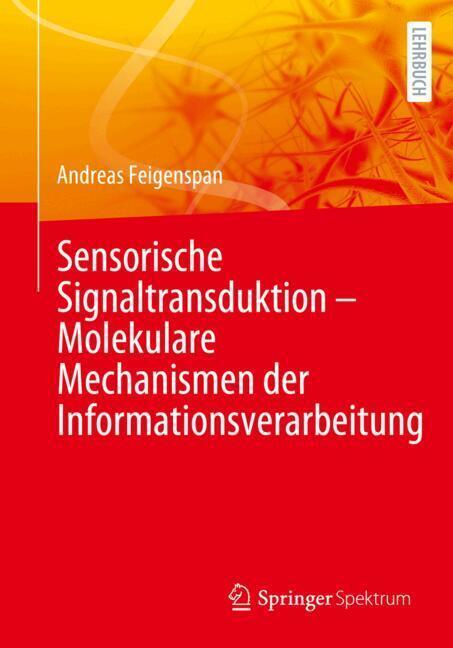While the importance of the immune synapse as a dynamic cell junction that regulates intercellular communication and viral transmission is universally recognized, many of quantitative and qualitative details remain unsettled. The plasticity of this cell junction has to accommodate many very different binding partners and control the fate of interacting cells. It is likely that developmental changes in the state of the T cells or the APCs can impact the structure of the synapse. It is hoped that uncovering the ordered molecular rearrangement at the membrane will provide the long sought after clues for the remarkable functional sensitivity of T lymphocytes. These dynamic molecular interactions may eventually explain how engagement of the same TCR can generate different outcomes that resolve the immune challenges. The reviews in this issue present a broad slice of the many diverse topics that are currently intensely debated.
1;183767_1_En_BookFrontmatter_OnlinePDF;1 2;183767_1_En_1_Chapter_OnlinePDF;16 2.1;Insights into Function of the Immunological Synapse from Studies with Supported Planar Bilayers;16 2.1.1;Introduction: Role of Receptor-Ligand Interaction in Immunity;17 2.1.2;Degrees of Freedom in Immune Cell Activation;18 2.1.3;Planar Bilayers and the Proof of MHC-Peptide Complexes;19 2.1.4;Determination of Two-Dimensional Affinity;21 2.1.5;Kinetic Rates of Interactions in Contact Area;22 2.1.6;Tandem Low-Affinity Interactions Have Additional Limitations;24 2.1.7;Segregation of Adhesion Molecules by Size;24 2.1.8;Formation of the Immunological Synapse;25 2.1.9;Microclusters Drive Activation;26 2.1.10;Modes of T-Cell Signal Integration;27 2.1.11;B Lymphocytes Acquire Antigen by Force;28 2.1.12;The F-Actin Machine Behind the Synapse;29 2.1.13;What Is the Function of the Immunological Synapse?;31 2.1.14;Conclusions;33 2.1.15;References;33 3;183767_1_En_2_Chapter_OnlinePDF;40 3.1;Immunological Synapses Within Context: Patterns of Cell-Cell Communication and Their Application in T-T Interactio;40 3.1.1;Introduction;41 3.1.2;The Emergent Prototypical Immunological Synapse Dynamics;42 3.1.3;Functional Patterns of Cell-Cell Communication;45 3.1.3.1;Dynamic Cellular Assembly and Disassembly;45 3.1.3.2;Defined but Flexible Polarity;47 3.1.3.3;Close Membrane-Membrane Juxtaposition with a Synaptic Cleft;47 3.1.3.4;Aggregation and Segregation of Transmembrane Receptors and Lipids;48 3.1.4;Four Fundamental Immunological Synapse Patterns Are Observed in the Interactions of Activating T Cells with One Another;49 3.1.5;Signaling Implication of T-T contacts for IL-2 Receptor Structure and Function;53 3.1.6;Additional Roles of T-T Synaptic Contact;56 3.1.6.1;Physiological Circumstances of T-Cell Cluster Formation and Its Role in Secondary Responses;56 3.1.6.2;``Quorum Sensing´´ by the Immune System for Activation and Differentiation of the Effectors;57 3.1.6.3;Polarization of Helper T-Cell Differentiation via Synaptic Cytokine Sharing;57 3.1.6.4;T-T Interactions during the Cessation of the Immune Response: The Facilitation of Fas/TNF Interactions Leading to Apopt;58 3.1.6.5;Treg Exclusion in T-T Contacts;58 3.1.7;Creating System-Wide Decisions Through Collective and Spatiotemporal Information Sharing;59 3.1.7.1;Cell-Based Vectorial Spreading of Information;60 3.1.7.2;Selection of a System of Appropriate Cell Types;60 3.1.7.3;A Very Steep Gradient of Cues at Each Encounter Point;60 3.1.7.4;Repeated Selection for Specificity and Mutual Enhancement;60 3.1.8;Concluding Remarks;61 3.1.9;References;61 4;183767_1_En_3_Chapter_OnlinePDF;66 4.1;Molecular and Cellular Dynamics at the Early Stages of Antigen Encounter: The B-Cell Immunological Synapse;66 4.1.1;Introduction;67 4.1.2;Molecular Dynamics of B-Cell Antigen Recognition and IS Formation;67 4.1.2.1;A Two-Phase Response Leads to B-Cell Synapse Formation;67 4.1.2.2;Microsignalosomes as the Basic Unit of Signalling in B Cells;69 4.1.2.3;The Importance of the Context;70 4.1.2.4;Antigen Presenting Cells;71 4.1.3;Cellular Dynamics at the Onset of the B-Cell Response In Vivo;71 4.1.3.1;The Naïve B-Cell Migration Pattern: Searching for Antigen;71 4.1.3.2;Early Steps in Antigen Recognition and Activation of Naïve B Cells;72 4.1.3.2.1;Tracking Antigen Recognition In Vivo;73 4.1.3.2.2;In Vivo B-Cell Dynamics;74 4.1.3.2.3;B-Cell IS In Vivo;75 4.1.4;Concluding Remarks;75 4.1.5;References;76 5;183767_1_En_4_Chapter_OnlinePDF;78 5.1;Inhibitory and Regulatory Immune Synapses;78 5.1.1;Introduction;79 5.1.2;Definition of Inhibitory Immune Synapses;79 5.1.3;Formation of Inhibitory Synapses;80 5.1.4;Balancing Synapses with Kinapses and Kinetic Proofreading at the Cellular Level;84 5.1.5;Unzipping the Synapse;85 5.1.6;Regulatory Synapses;85 5.1.7;The Regulatory NK-Cell Synapse;86 5.1.8;Triggering Cytokine Secretion Versus Cytolysis;86 5.1.9;References;88 6;183767_1_En_5_Chapter_OnlinePDF;95 6.1;The Immunological Synapse, TCR Microclus
Saito, Takashi
Batista, Facundo D.
| ISBN | 9783642038587 |
|---|---|
| Artikelnummer | 9783642038587 |
| Medientyp | E-Book - PDF |
| Auflage | 2. Aufl. |
| Copyrightjahr | 2009 |
| Verlag | Springer-Verlag |
| Umfang | 255 Seiten |
| Sprache | Englisch |
| Kopierschutz | Digitales Wasserzeichen |

